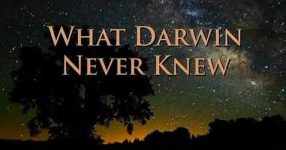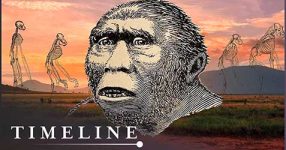In the quest to unravel the enigmatic story of our ancient predecessors, “The Neanderthals: Tracking Our Ancestors” takes us on a captivating journey. This documentary delves into uncharted Neanderthal mysteries using cutting-edge research and archaeological techniques to shed light on the development and decline of the earliest human species.
In Search of Our Ancestral Origins
Renowned researchers and paleoanthropologists, Chris Stringer and Ludovic Slimak, lead this gripping exploration, embarking on a quest that spans northern France, Belgium, the Channel Islands, and southern England. Transport yourself back to a time when the North Sea was but a small river, easily traversable on foot during the last ice age.
Unearthed Artifacts: The Neanderthal Legacy
At various archaeological sites throughout northern France, southern England, and the island of Jersey, Stringer and Slimak unearth artifacts that unlock the mysteries surrounding Neanderthals’ survival and flourishing within their ever-changing environment. These remarkable finds provide a glimpse into the lives of our ancient relatives, sparking questions about their cognitive abilities and intelligence.
In the Footsteps of Early Humans
Long before Homo sapiens roamed the Earth, Neanderthals called Eurasia home for thousands of years. These ancient humans, who thrived for approximately 300,000 years before vanishing 40,000 years ago, have long intrigued scientists. The challenge has always been to uncover more about their existence, given the vastness of time that separates us.
Unraveling the Neanderthal Enigma
The story of Neanderthals begins with the first evidence discovered in 1829. However, over the past two centuries, scientists and paleoanthropologists have tirelessly worked to piece together a clearer picture of their identity, lifestyle, and the factors that led to their extinction. Thanks to modern archaeological tools and significant discoveries in the last 25 years, the Neanderthals are slowly revealing their secrets.
Surviving the Ice Age: Mastering the Environment
Imagine a vastly different Eurasia during the Ice Age, where Neanderthals thrived in an unforgiving climate, enduring temperatures as low as -20°C. Their ability to adapt was evident in their anatomy, boasting larger nasal cavities and lungs, perfectly suited for cold climates. Neanderthals demonstrated their resourcefulness by crafting tools and weapons, primarily from flint, which aided them in hunting mammoths and bison for sustenance and warmth.
Nomadic Communities: Evidence of Organization
Contrary to stereotypical depictions, Neanderthals were not primitive cave dwellers. Recent archaeological findings in England, France, and Jersey reveal that they lived in small, organized groups of 20 to 30 individuals. These groups allocated specific areas for various activities, from material gathering to butchering game. Such organization hints at their ability to communicate effectively and exchange news and members, ensuring their survival.
Language, Culture, and Art: Unanswered Questions
While evidence suggests Neanderthals were far from simplistic, questions about their communication and culture remain. The discovery of ancient Neanderthal stalactite circles dating back 175,000 years in France’s Bruniquel Caves hints at artistic and cultural pursuits. However, further research is required to fully comprehend the intricacies of their communication and creativity.
The Arrival of Homo Sapiens: A Gradual Transition
Around 42,000 years ago, Homo sapiens made their entrance into Western Europe, coinciding with the gradual decline of the Neanderthals. Coexistence between the two species lasted for 2,000 to 4,000 years, marked by interbreeding. Homo sapiens, with their advanced technology and social sophistication, eventually prevailed, leading to the Neanderthals’ extinction and becoming the sole human species on Earth.
Unlocking Our Ancient Past for a Brighter Future
While we may never paint a complete picture of Neanderthal life, the traces of their DNA in modern humans make it imperative to continue unraveling their story. Understanding who they were and how they lived not only offers insights into an alternate Earth where they still exist but also connects us to our ancient heritage, guiding our path toward the future.
“The Neanderthals: Tracking Our Ancestors,” directed by Rob Hope and Pascal Cuissot, stands as a testament to the relentless pursuit of knowledge about our shared ancestry.

 (1 votes, average: 4.00 out of 5)
(1 votes, average: 4.00 out of 5)










